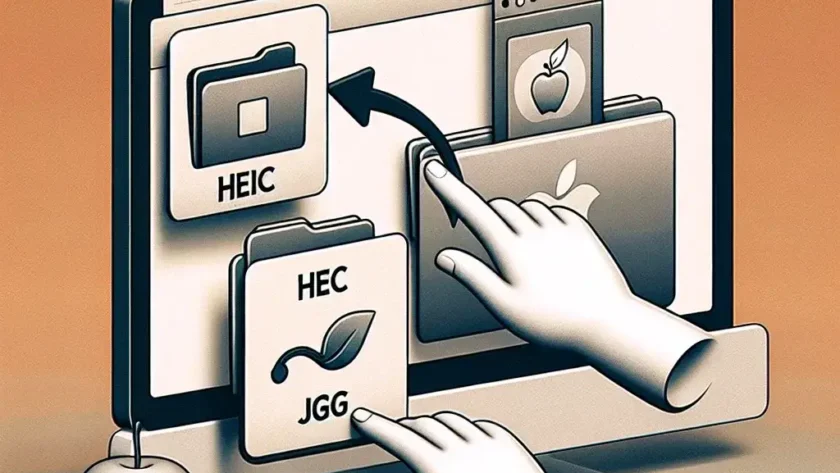Switching from HEIC to JPG on your Mac is often necessary for broader compatibility with other devices and software. While HEIC offers superior compression and image quality, JPG remains the dominant image format. Thankfully, converting HEIC to JPG on a Mac is a straightforward process with several readily available options. Find out how to change heic to jpg on mac easily.
Using the Preview App
The Preview app, pre-installed on every Mac, provides a built-in solution for HEIC to JPG conversion. Simply open the HEIC file in Preview, go to the File menu, and select Export. In the export window, choose JPEG as the format and adjust the quality slider as needed. This method is convenient for single file conversions.
Leveraging Automator for Batch Conversion
For converting multiple HEIC files simultaneously, Automator provides a powerful automation tool. Create a new Quick Action in Automator, add the “Copy Finder Items” action to ensure originals are preserved, followed by the “Change Type of Images” action, selecting JPEG as the output format. This creates a reusable workflow accessible via the Finder’s right-click menu, streamlining batch conversions.
Online HEIC to JPG Converters
Online converters offer a quick and easy solution, particularly if you only need to convert a few files occasionally. HEIC2JPG.CC, for instance, provides a free and efficient platform for converting HEIC files to JPG without requiring any software installation. Simply upload your HEIC files, and the website will quickly process and provide you with the converted JPG images for download. This method is particularly useful for users who prefer a no-fuss approach.
Exploring iMazing HEIC Converter
iMazing HEIC Converter stands out as a free desktop application specifically designed for HEIC to JPG conversion. It offers an intuitive user interface that supports drag-and-drop functionality, making it exceptionally user-friendly. iMazing HEIC Converter also boasts batch conversion capabilities, handling large numbers of files efficiently. For users seeking a dedicated tool, iMazing HEIC Converter provides a robust solution.
Understanding HEIC and JPG
HEIC, or High Efficiency Image Format, is a modern image format known for its superior compression and image quality compared to older formats like JPG. It allows for smaller file sizes without significant loss of detail, making it ideal for conserving storage space on devices like iPhones and iPads. However, JPG maintains wider compatibility across various platforms and software.
JPG, or Joint Photographic Experts Group, is a widely recognized and accepted image format. Its universality makes it the preferred choice for sharing images across different devices and operating systems. While JPG uses lossy compression, which can result in some image degradation, it offers a good balance between file size and image quality.
Optimizing Images for Web Use
When converting HEIC to JPG for web use, optimizing the images for performance is crucial. Reducing file size without compromising image quality improves page load times and enhances the user experience. Tools like image optimizers can help compress JPG files further, minimizing their impact on website performance. Striking the right balance between image quality and file size is key for optimal web performance.
Choosing the Right Conversion Method
The best HEIC to JPG conversion method depends on individual needs and circumstances. For single file conversions, the Preview app offers a convenient solution. Batch conversions are best handled using Automator or dedicated desktop applications like iMazing HEIC Converter. Online converters provide a quick and easy alternative for occasional conversions. Understanding the strengths of each method allows users to select the most efficient approach for their specific requirements.
Further Resources for Image Optimization
For those looking to delve deeper into image optimization, numerous online resources provide valuable information. Websites dedicated to web development and image editing often offer tutorials, guides, and best practices for optimizing images for web use. Exploring these resources can further enhance your understanding of image optimization techniques (Google Developers and Web.dev are good places to start).

